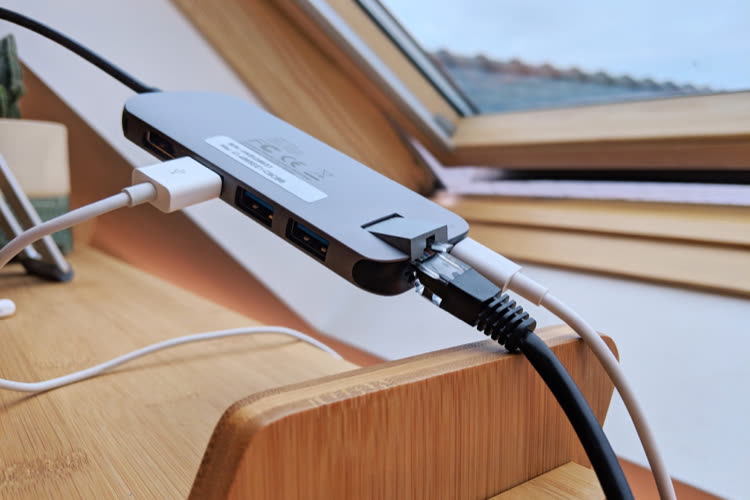This is not new, but the topic has surfaced recently In Michael Tsai : USB-C hubs that include an Ethernet port can have an unfortunate tendency to block your entire local network when it’s turned on, but not connected to a computer. This is a phenomenon I experienced myself during my tests of USB-C hubs for the iPad Pro, at the beginning of 2019. Of the nine models tested, one experienced problems.
Comparison: Nine USB-C Hubs for iPad Pro
How can a USB-C hub block an entire local network? It is a combination of small factors that, taken separately, are not bothersome, but This can lead to the main error. Only USB-C hubs that rely on the Power Delivery standard to transmit the power provided by the AC adapter are affected, because they remain active at all times, even when they are not connected to a device. Those that include an Ethernet jack can leave them active permanently.

Since a USB connection is not always 100% reliable, all hubs and adapters must have a mechanism to avoid data loss if the connection drops briefly. Technically, the best option is to add ” neutral », a cache that takes over during these reductions, but this increases the complexity and cost of the product. That is why distributor manufacturers often choose other methods, among which is the Ethernet pause mechanism.
Simply put, the Ethernet specification provides a “pause” command that interrupts the reception or transmission of new data for a short time. USB-C hubs can be used to avoid data loss on the Ethernet side: when the link to the computer is broken, a pause is required and the data will no longer be transmitted accidentally as long as it is. But while it works with intermittent power outages, it’s even more annoying when the hub stays running without being hooked up to a computer.
In this case, USB-C hubs constantly send a pause command to the local network, which is still not enough to block it completely. To this, we must add one last factor: the DHCP router, which assigns IP addresses to all local devices – ADSL or fiber box by default – is also shared. Not all models properly respect the Ethernet specification, in particular, some models can send the pause command to all devices on the local network, whether they are connected by wire or Wi-Fi. Then the entire network is paused and all devices are turned off inaccessible as long as the hub is still powered without connecting to a computer.
This unfortunate situation is not recent and is still relevant. There are still many products affected by this bug and it is difficult to know if this is the case for a particular model, especially since recognized brands are affected.

“Certified gamer. Problem solver. Internet enthusiast. Twitter scholar. Infuriatingly humble alcohol geek. Tv guru.”






